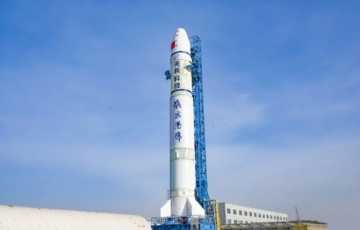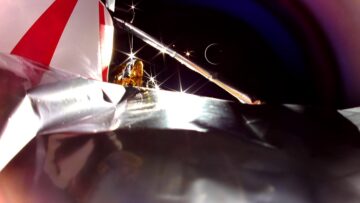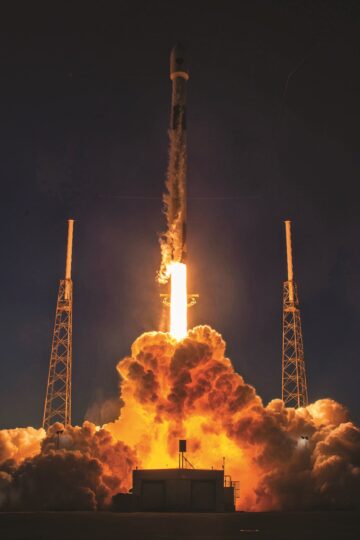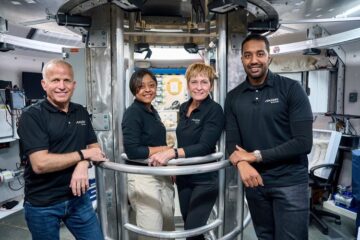
The Jet Propulsion Laboratory in Pasadena, California, is home base for building pioneering spacecraft that have probed every planet in our solar system, including the Sun.
Federally funded by NASA and managed by Caltech, JPL and its cadre of engineers and scientists are led by Laurie Leshin, the first woman to serve as JPL director, who took on the role in May 2022 following a career as a geochemist in academia and NASA.
Leshin points to space technology achievements, but has also been plagued by program setbacks and space budget woes, especially regarding the JPL-led Mars Sample Return project.
Leshin spoke with SpaceNews about JPL’s path forward and steps to retain and bolster the revered laboratory’s capabilities.
How do you characterize your concerns about NASA’s overall budget and its impact on JPL?
There is good news for sure, such as the VERITAS Venus orbiter coming back and that we’re now re-planning and ramping back up. Most of the [NASA] science budget is fairly flat which, while not great, is not terrible. Planetary science, however, finds itself in a very, very difficult position. It is a fairly unprecedented threat to the nation’s deep space capability which is resident at JPL, so I have major concerns.
How impactful were February’s budget-related layoffs on the lab’s future?
We hire only great people. So we will miss all those who were laid off. We’re supporting them in every way we can think of through their transition. While it cut to depth, it did not eliminate any core capability. We worked very hard in spite of having to make the deep cuts and to make sure those capabilities were intact.
What is an example of a core capability at JPL?
Our nation’s Mars exploration capability is resident at the lab. No other organization has landed on Mars in the United States except us — with partners always, but we have led every one of those missions. But if the budget challenges continue or decisions continue to be deferred, those capabilities will be at risk. I don’t know how to say it other than that.
Our job as a nation is to have some hard conversations about what being spacefaring for the future really means. How do we make sure that there’s Mars in our moon-to-Mars program? There’s no moon-to-Mars without Mars and there’s no Mars without JPL.
Any other NASA budget concerns?
A science versus human spaceflight moment is not good for our community. We all need to pull together to support the diverse portfolio that NASA has. In tight budget times, we tend to fight with each other and that is always a bad idea.
JPL leads the development of the Europa Clipper mission. All on track for liftoff this October?
Europa Clipper just came out of JPL’s thermal vacuum chamber. You shake it. You bake it. You look for magnetic cleanliness. End-to-end missions tests to simulate launch, solar array deployment, deep space cruise, orbit insertion at Jupiter, flybys of Europa. We’ve done all of that. We’re in really good shape. We’re on track to ship it to Florida in the May timeframe and get it ready to fly on a SpaceX Falcon Heavy.
There’s another look looming at the costly and complex Mars Sample Return program. What’s coming?
I can’t talk about it at this time. That review is coming relatively soon… to be released in the spring. NASA has funding challenges. It’s a really important set of decisions they are making. Mars Sample Return was the next big thing at JPL. So we need to make sure that gets back on track as quickly as possible.
So you see a way forward for Mars Sample Return?
It’s a difficult moment. There’s a way to move forward with this mission that will cost less on an annual basis than the prior plan and it’s very much in line with what we’ve spent on other large missions. NASA has a chance to go down that path. I hope they will… and then I’ll breathe.
- SEO Powered Content & PR Distribution. Get Amplified Today.
- PlatoData.Network Vertical Generative Ai. Empower Yourself. Access Here.
- PlatoAiStream. Web3 Intelligence. Knowledge Amplified. Access Here.
- PlatoESG. Carbon, CleanTech, Energy, Environment, Solar, Waste Management. Access Here.
- PlatoHealth. Biotech and Clinical Trials Intelligence. Access Here.
- Source: https://spacenews.com/jpl-chief-laurie-leshin-science-mars-budget-infighting/
- :has
- :is
- :not
- $UP
- 2022
- a
- About
- about IT
- Academia
- achievements
- All
- also
- always
- an
- and
- annual
- Another
- any
- ARE
- Array
- AS
- At
- back
- back on track
- Bad
- base
- basis
- BE
- been
- being
- Big
- bolster
- BREATHE
- budget
- Building
- but
- by
- california
- came
- CAN
- capabilities
- capability
- Career
- challenges
- Chamber
- Chance
- characterize
- chief
- coming
- community
- complex
- Concerns
- continue
- conversations
- Core
- Cost
- costly
- cruise
- Cut
- cuts
- decisions
- deep
- deployment
- depth
- Development
- DID
- difficult
- Director
- diverse
- do
- done
- Dont
- down
- each
- eliminate
- end-to-end
- Engineers
- especially
- Europa
- Every
- example
- Except
- exploration
- fairly
- falcon
- fight
- finds
- First
- flat
- florida
- following
- For
- Forward
- funded
- funding
- future
- get
- gets
- Go
- good
- great
- Hard
- Have
- having
- heavy
- hire
- Home
- hope
- How
- How To
- However
- HTTPS
- human
- i
- I’LL
- idea
- if
- Impact
- impactful
- important
- in
- Including
- IT
- ITS
- itself
- Job
- jpg
- jpl
- Jupiter
- just
- Know
- lab
- laboratory
- laid
- large
- launch
- layoffs
- Leads
- Led
- less
- Line
- Look
- looming
- major
- make
- Making
- managed
- mars
- May..
- means
- miss
- Mission
- missions
- moment
- most
- move
- move forward
- much
- Nasa
- nation
- Nations
- Need
- news
- next
- no
- now
- october
- of
- off
- on
- ONE
- only
- or
- Orbit
- organization
- Other
- our
- out
- overall
- partners
- path
- People
- Pioneering
- plagued
- plan
- planet
- Planetary science
- plato
- Plato Data Intelligence
- PlatoData
- points
- portfolio
- position
- possible
- Prior
- Program
- project
- propulsion
- quickly
- ramping
- ready
- really
- regarding
- relatively
- released
- retain
- return
- review
- Risk
- Role
- sample
- say
- Science
- scientists
- see
- serve
- set
- Setbacks
- Shape
- simulate
- So
- solar
- Solar system
- some
- Space
- spacecraft
- spaceflight
- SpaceX
- spent
- Spite
- spring
- States
- Steps
- such
- Sun
- support
- Supporting
- sure
- system
- Talk
- Technology
- tend
- terrible
- tests
- than
- that
- The
- The Future
- their
- Them
- then
- thermal
- they
- thing
- Think
- this
- those
- threat
- Through
- time
- timeframe
- times
- to
- together
- took
- track
- transition
- United
- United States
- unprecedented
- us
- Vacuum
- Venus
- Versus
- very
- was
- Way..
- we
- were
- What
- which
- while
- WHO
- will
- with
- without
- woman
- worked
- you
- Your
- zephyrnet











